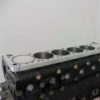Rb34 / 24U (Rb26 + 800Cc) - Project RB high deck engine (and related builds)
Announcements
-
Latest Posts
-
Need to see other side of PCB in that area...ie; I don't see any thru-hole mounting, just soldered vias (smd zeners in SOT23 have 3 legs but only 2 are used, as reflected by PCB tracks)
-
4 to 5 is fine. It will be slow, but that's better than blowing turbos. I don't have a PS pump idle up solenoid on my car, because... I think when we put the Neo in we retained my R32 lines. But.... From inspecton of the R34 vacuum hose diagram, you can see that the solenoid needs to be connected to the turbo inlet as source of clean air) and the plenum (as source of vacuum - which is the place for the air to flow to to cause the idle to increase). So 3 to 1 is VERY WRONG. 3 should go to either the turbo inlet, or the plenum. Follow the other hose from the PS solenoid and if it goes to the plenum, then your 3 goes to 2 2 would also serve as a bleed port for a boost solenoid.
-
Pull them out and pull more apart. You can't do shit with them still bolted to the floor of the car.
-
Yes it is. ZD1 is on the other side of the board. Where ZD1 is marked is clearly opposite a 2 pin device. Our 3 pin device here is not a ZD.
-
Alright, a little update on this... I called Fulcrum, who used to be the distributor in Australia. No Bueno, they don't service them anymore. Called shock works, who don't service them but offered to dyno the shocks for performance, and suggested DNA in Sydney might service them. Called DNA, who also do not service them and basically said they try to steer customers away from tein for this exact reason these days- there is just no support for them anymore apparently. Both SW and DNA said they are a not necessarily a bad product, but they just don't service the brand or know anyone who does service the brand anymore. So... I could keep calling around but at this point I think I'll probably just spring for the shockworks product, unless anyone here knows anything. Cheers 🍻
-


Recommended Posts
Create an account or sign in to comment
You need to be a member in order to leave a comment
Create an account
Sign up for a new account in our community. It's easy!
Register a new accountSign in
Already have an account? Sign in here.
Sign In Now